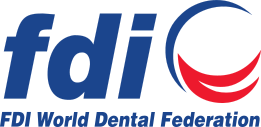Digital Dentistry
Context
Digital dentistry integrates a wide array of technologies into dental care and management. These include digital devices for oral health monitoring, disease detection and risk assessment, patient education, and teledentistry. Additionally, it encompasses scanners and imaging tools to digitize oral structures, CAD/CAM systems for designing and manufacturing dental restorations, models, and appliances, virtual simulations for enhanced treatment planning and communication, computer-assisted surgical navigation, electronic health records, and artificial intelligence. The primary goal of employing these digital technologies is to enhance the quality, safety, and efficiency of oral healthcare.
Scope
This policy statement aims to encourage dental professionals, educators, researchers, and policymakers to embrace advancements and address the challenges of digital dentistry. It seeks to guide stakeholders in adopting digital technologies when beneficial, while responsibly and effectively mitigating risks for the benefit of patients, providers, and society.
Definitions
Digital Dentistry: the use of digital technologies, including digital interventions, services, and applications, to address oral health challenges and needs.1,2
Principles
Digital dentistry should be evidence-based, outcome-driven, and of high quality, while remaining patient-centred, ethical, fair, and inclusive. Its adoption should be supported by robust governance that safeguards privacy and data security. Interoperability and sustainability are essential, and continuous professional development is needed to balance digital tools with clinical judgment.
Policy
FDI recommends dental professionals, educators, researchers, manufacturers and policymakers:
- Align digital dentistry with primary healthcare and global oral health strategies.
- Critically evaluate the evidence supporting digital dentistry applications.
- Support user-friendly technologies that are accessible to both providers and patients alike, to promote equity and fairness of oral healthcare.
- Provide, participate in, and consider education and training opportunities to employ digital technologies while retaining professional judgement and responsible patient management.
- Develop and integrate a comprehensive curriculum on digital dentistry into undergraduate, postgraduate, and professional dental education programmes.
- Establish and comply with legal and regulatory frameworks that maintain privacy, while fostering safe collection and storage of data, access to data as the basis for many digital dentistry technologies, research and development.
- Support the development and use of relevant standards to ensure the quality, effectiveness, safety, interoperability, and applicability of digital dentistry for the improvement of oral health.
Keywords
Data, digital dentistry, digital health, interoperability, standards.
Disclaimer
The information in this policy was based on the best available scientific evidence at the time. It may be interpreted to reflect prevailing cultural sensitivities and socio-economic factors.
References
- WHO. Classification of digital interventions, services and applications in health: a shared language to describe the uses of digital technology for health, second edition. Geneva: WHO; 2023.
- WHO. Global strategy on digital health 2020-2025. Geneva: WHO; 2021.
